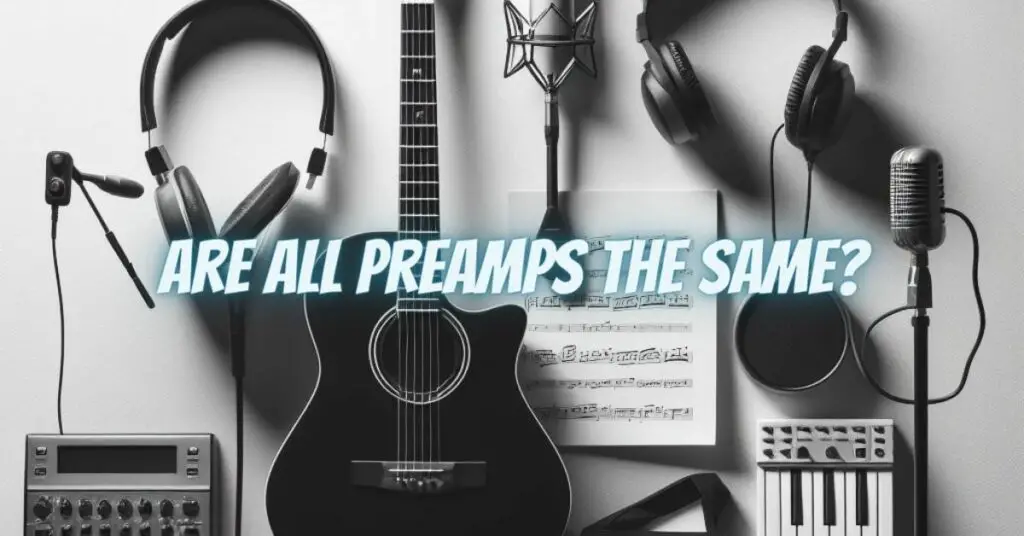In the intricate world of audio production, the role of preamplifiers is paramount, serving as the gateway between the source signal and the recording or amplification system. A common query that pervades the minds of audio enthusiasts is whether all preamps are the same. This article aims to unravel the complexities surrounding preamps, dissecting the key factors that differentiate them and debunking the misconception that all preamps share identical sonic characteristics.
- Diverse Types of Preamps: Preamps come in various types, each designed to cater to specific applications and sonic preferences. Tube preamps, solid-state preamps, hybrid preamps, and discrete transistor preamps are just a few examples of the diverse landscape. Each type introduces unique sonic characteristics, ranging from the warmth associated with tubes to the transparency of solid-state designs.
- Tonal Coloration and Character: Perhaps one of the most defining aspects distinguishing preamps is their tonal coloration and character. Tube preamps, known for their harmonically rich sound, impart a warmth and saturation that is distinct from the clean and precise transparency offered by solid-state preamps. The choice of preamp type can significantly impact the final sonic output, allowing engineers and musicians to shape their sound according to their artistic vision.
- Build Quality and Components: The construction and components of a preamp play a pivotal role in shaping its sonic signature. High-quality components, such as transformers, capacitors, and resistors, contribute to a preamp’s reliability, longevity, and overall performance. Well-built preamps often exhibit lower noise levels, better signal-to-noise ratios, and superior dynamic range.
- Impedance Matching and Input Options: Preamps designed for specific instruments or microphones often include features like selectable input impedance. This allows users to match the impedance of the preamp to that of the connected device, optimizing the signal transfer and capturing the unique sonic characteristics of different sources. Versatile preamps accommodate a range of input options, providing flexibility for various recording scenarios.
- Dynamic Range and Headroom: The dynamic range and headroom of a preamp influence its ability to handle a wide range of input levels without distortion. High-quality preamps excel in providing ample headroom, allowing for the capture of both delicate nuances and powerful transients in the audio signal. The dynamic range of a preamp contributes to the clarity and fidelity of the reproduced sound.
- Phantom Power and Specialty Features: While many preamps offer phantom power for condenser microphones, the availability and quality of this feature can vary. Some preamps may provide additional features such as built-in EQ, compression, or harmonic saturation, further diversifying their sonic capabilities. These specialty features contribute to the uniqueness of each preamp model.
- Brand and Design Philosophy: The brand and design philosophy behind a preamp manufacturer also contribute to the distinctiveness of their products. Different companies may prioritize certain sonic qualities, leading to variations in the tonal characteristics, feature sets, and design aesthetics of their preamps. User reviews and brand reputation can be valuable indicators of a preamp’s performance and sonic signature.
In the realm of audio production, the notion that all preamps are the same stands as a myth waiting to be debunked. The diverse landscape of preamps, encompassing different types, tonal characteristics, and design philosophies, ensures that each preamp is a unique tool with its sonic fingerprint. Whether seeking the warmth of tubes, the precision of solid-state designs, or the versatility of hybrid models, audio enthusiasts can navigate the sonic spectrum of preamps to find the perfect match for their creative endeavors. Ultimately, the quest for the ideal preamp involves an exploration of sonic possibilities and a recognition that the subtle nuances of these audio workhorses contribute to the rich tapestry of sound in the world of music and recording.


